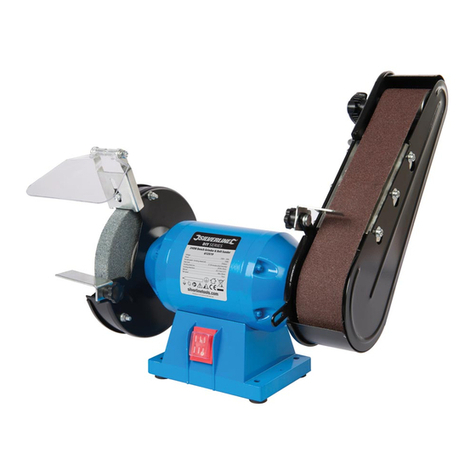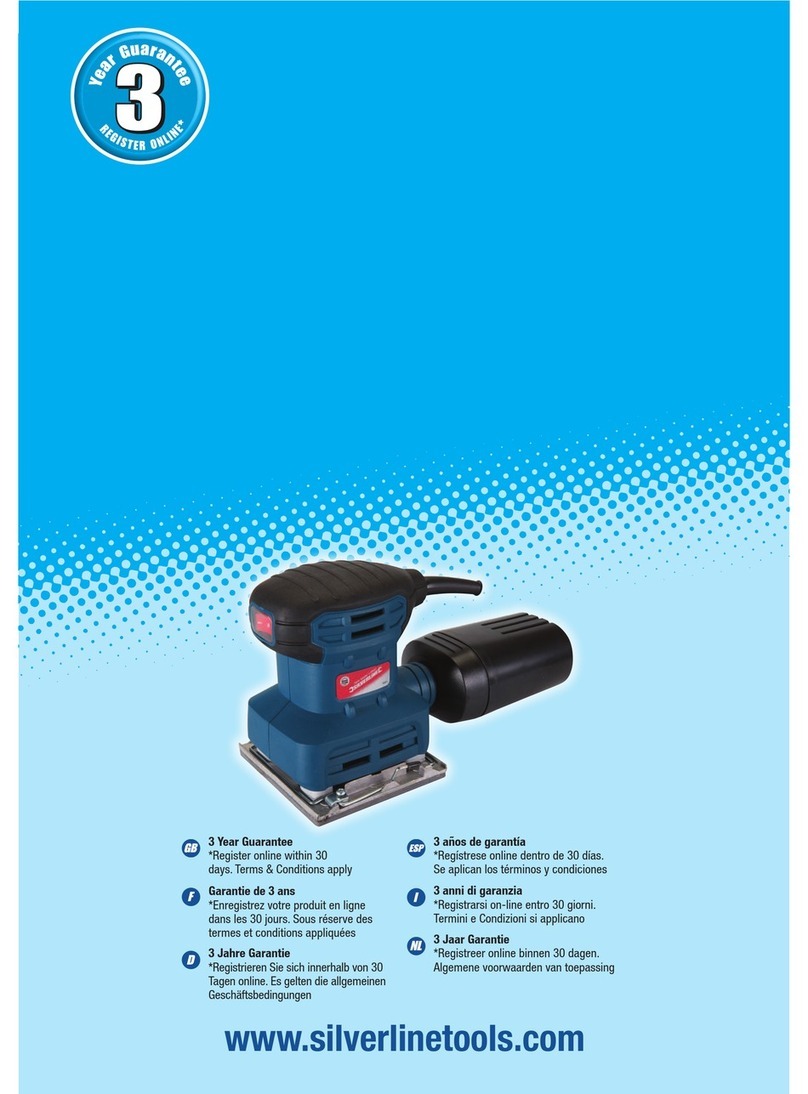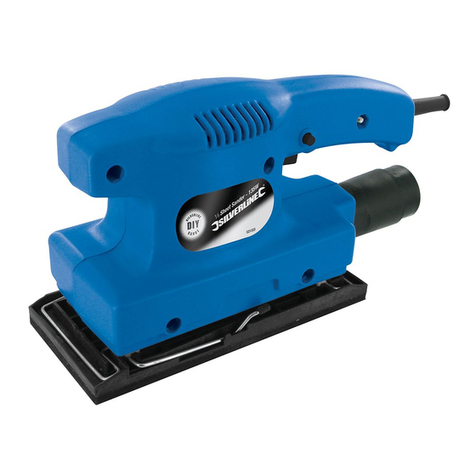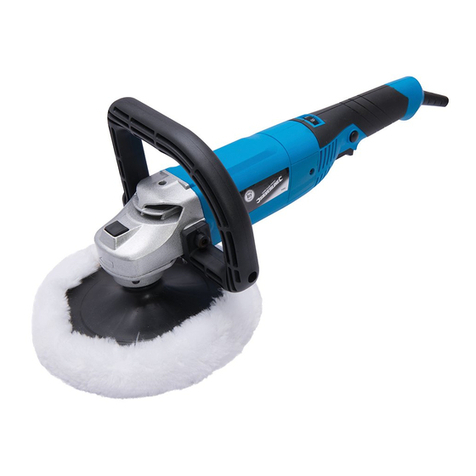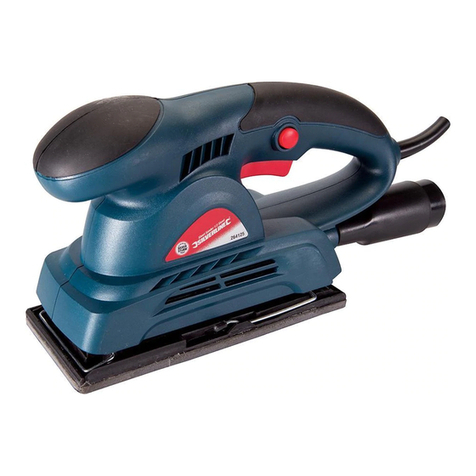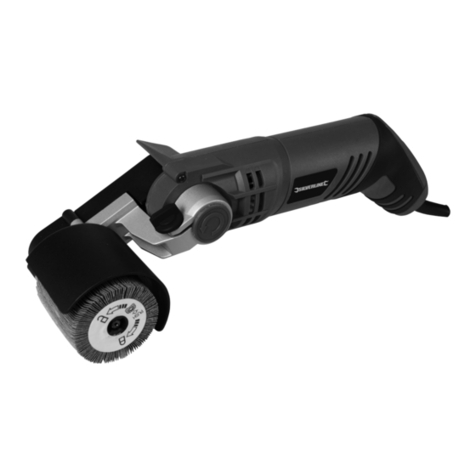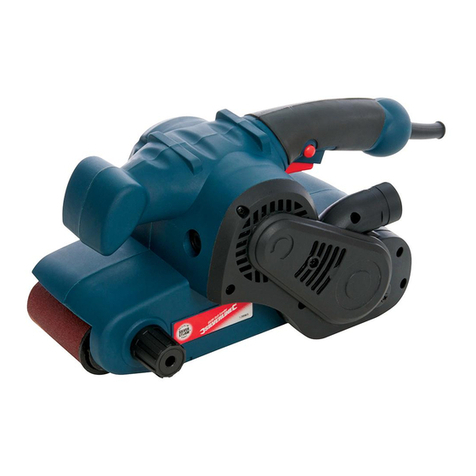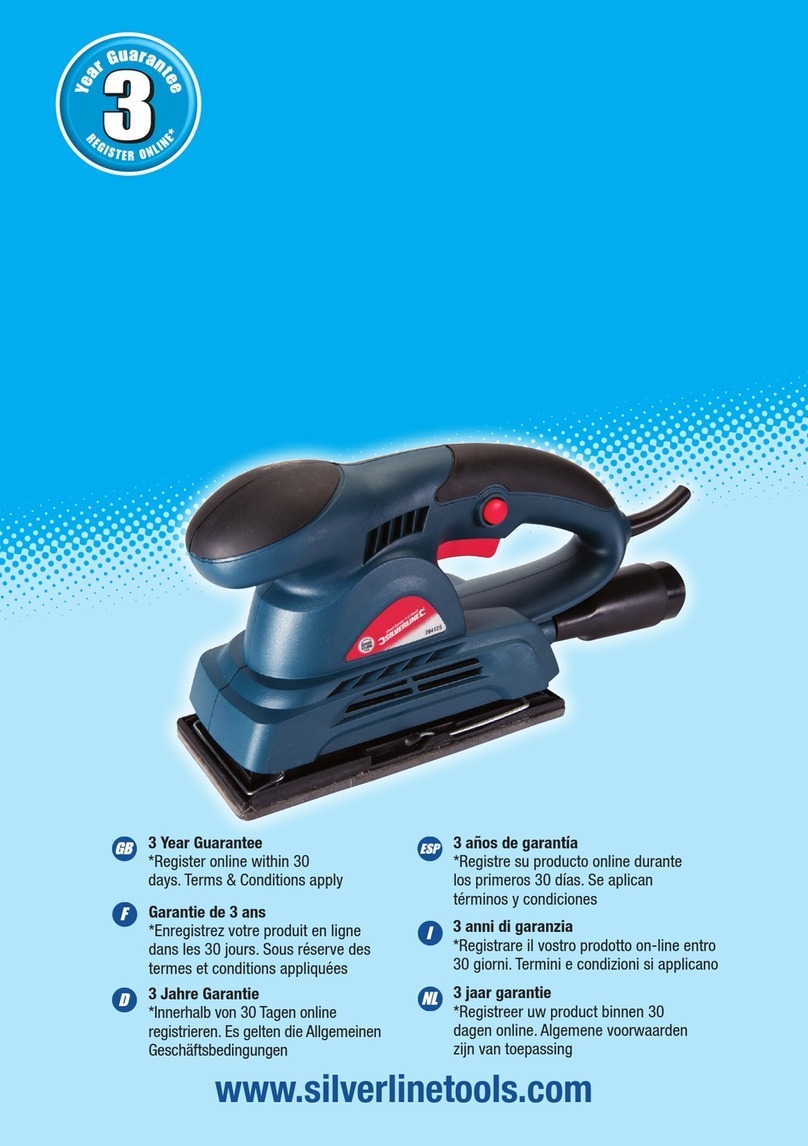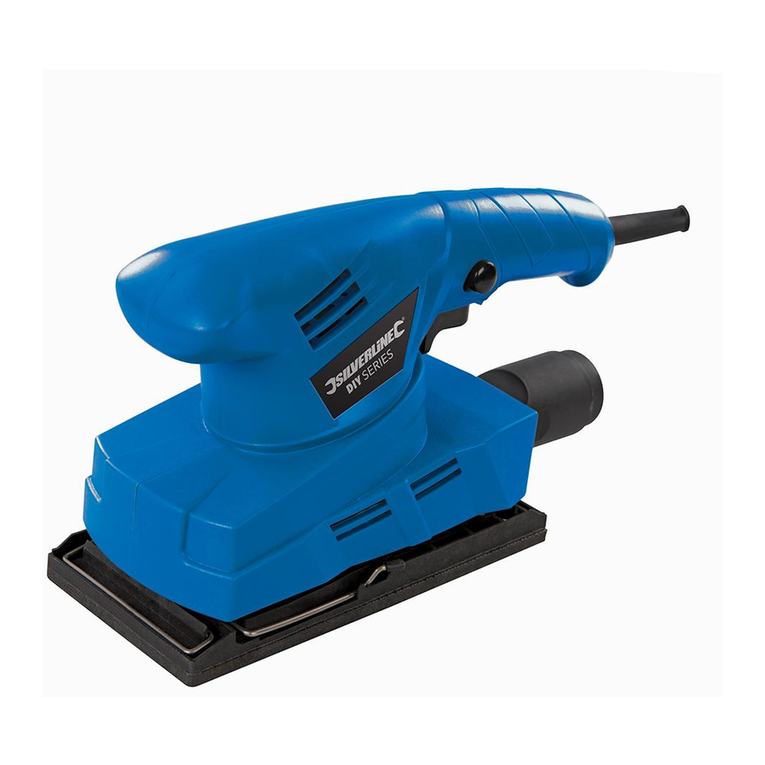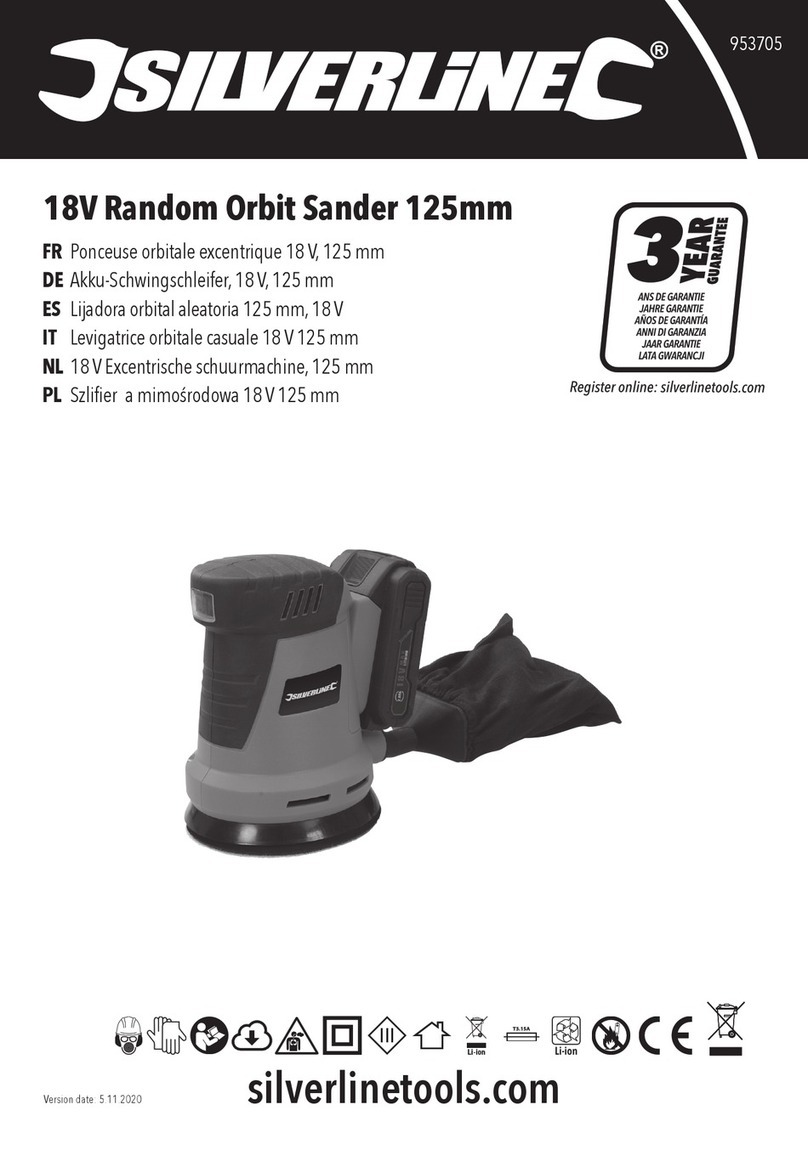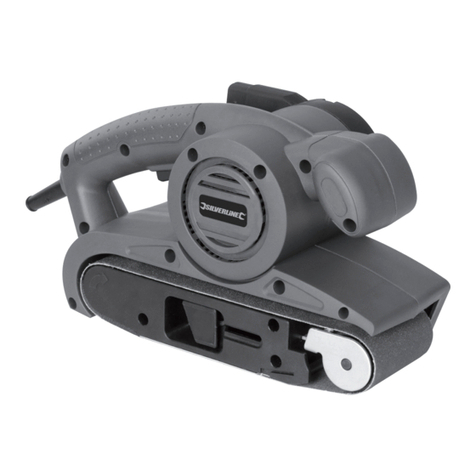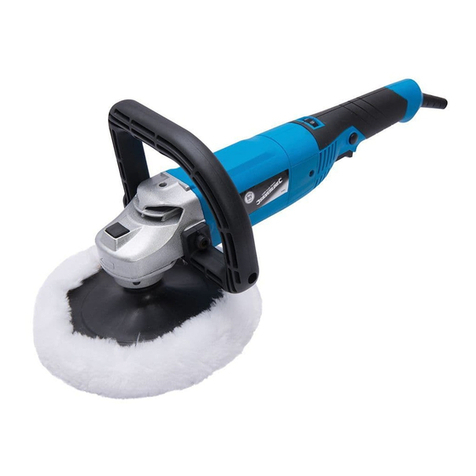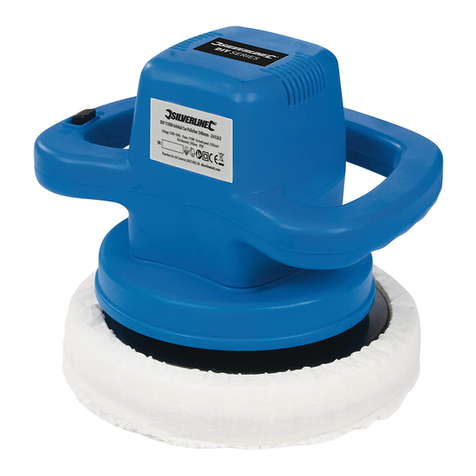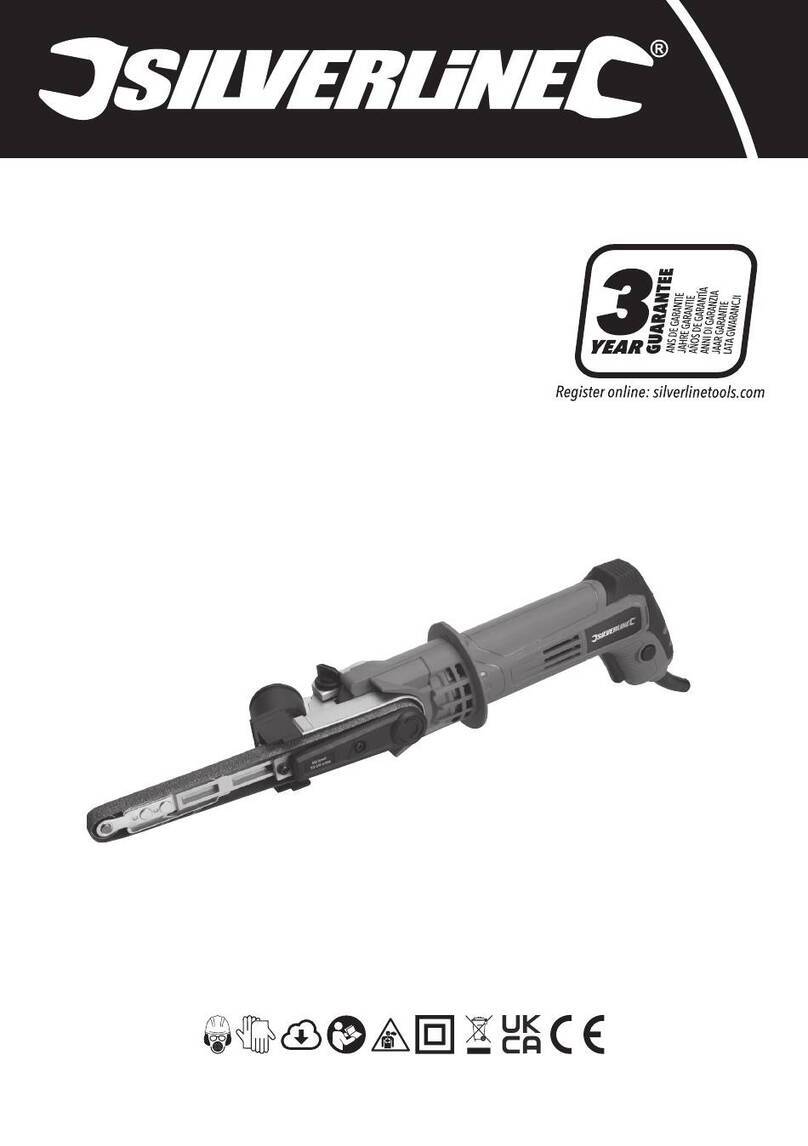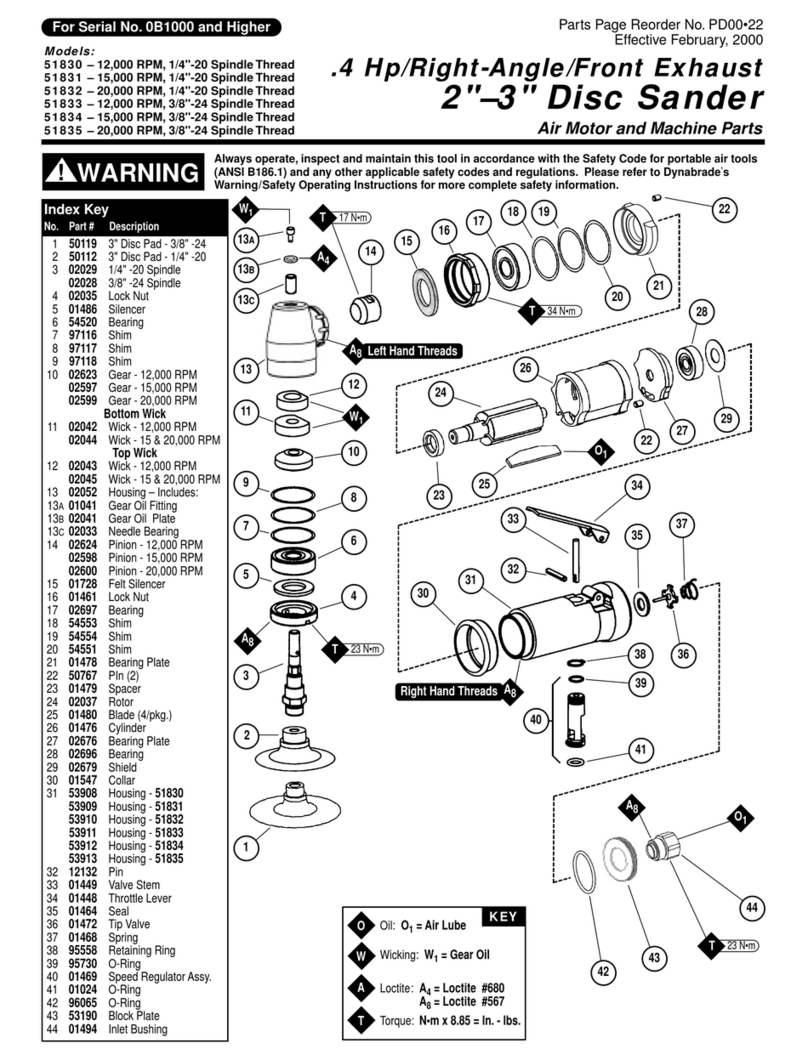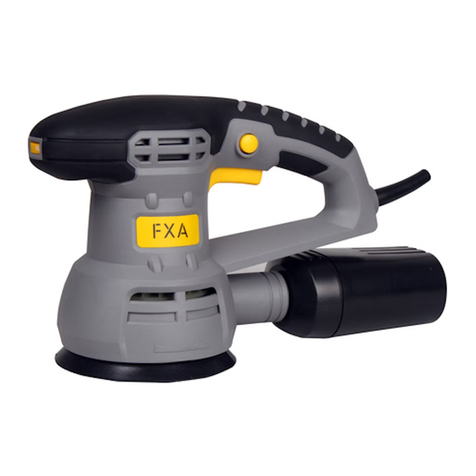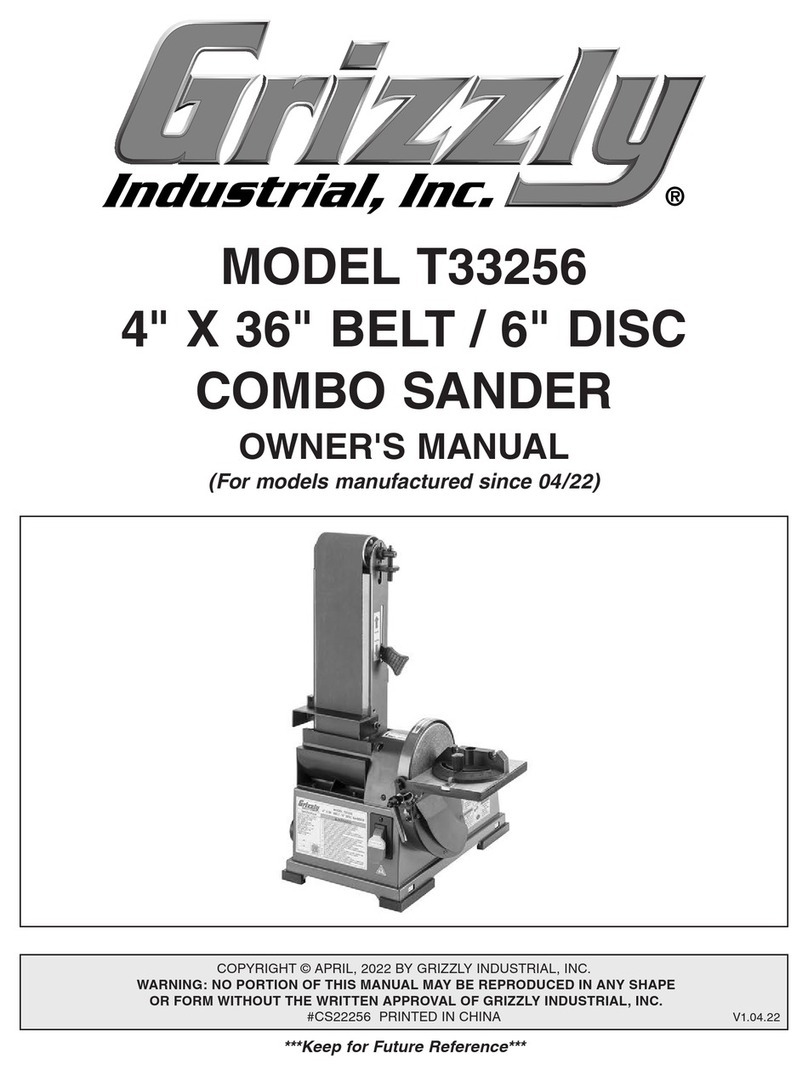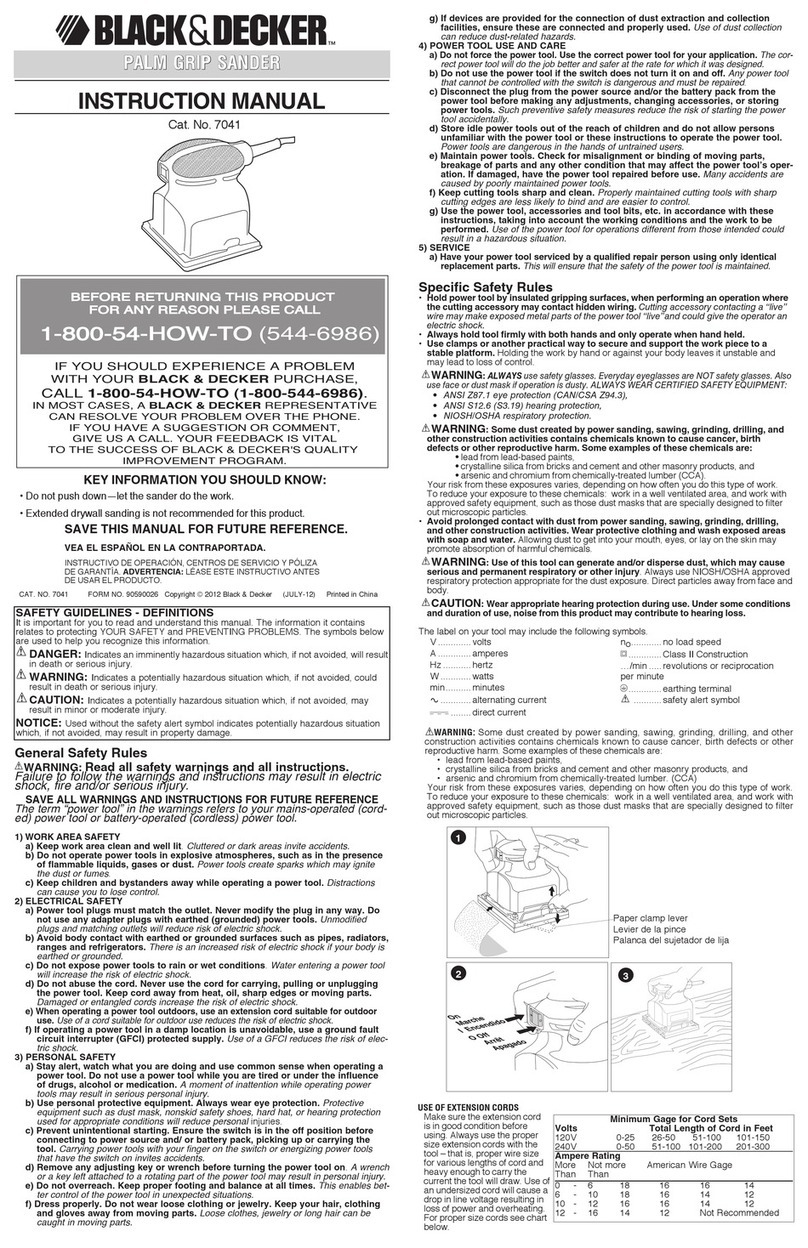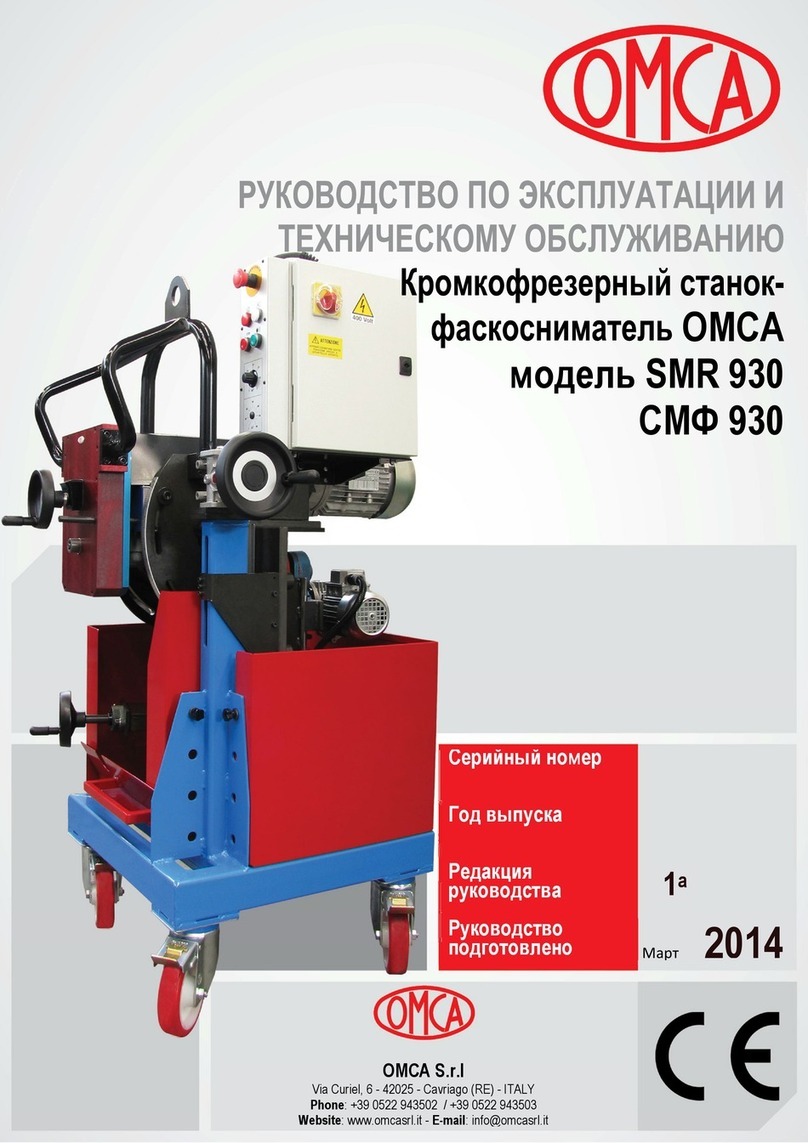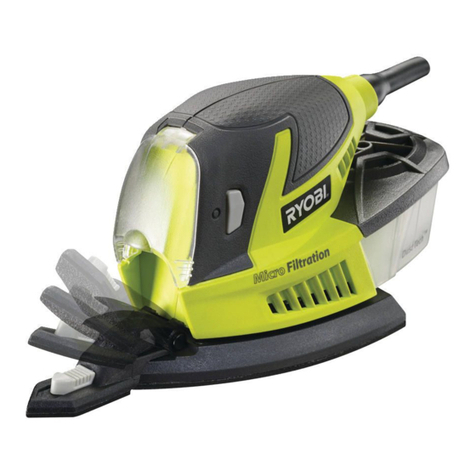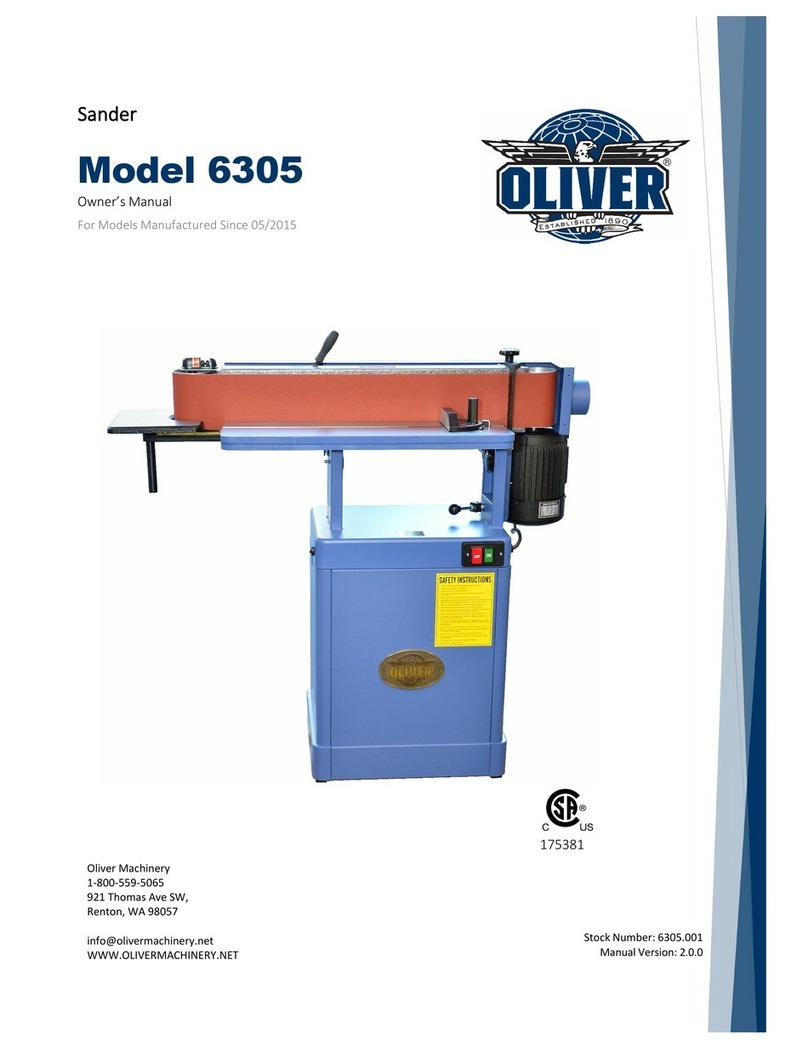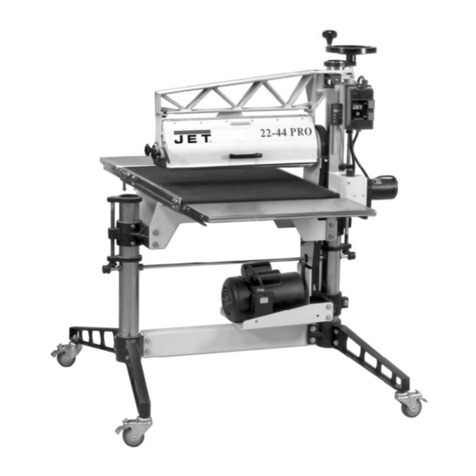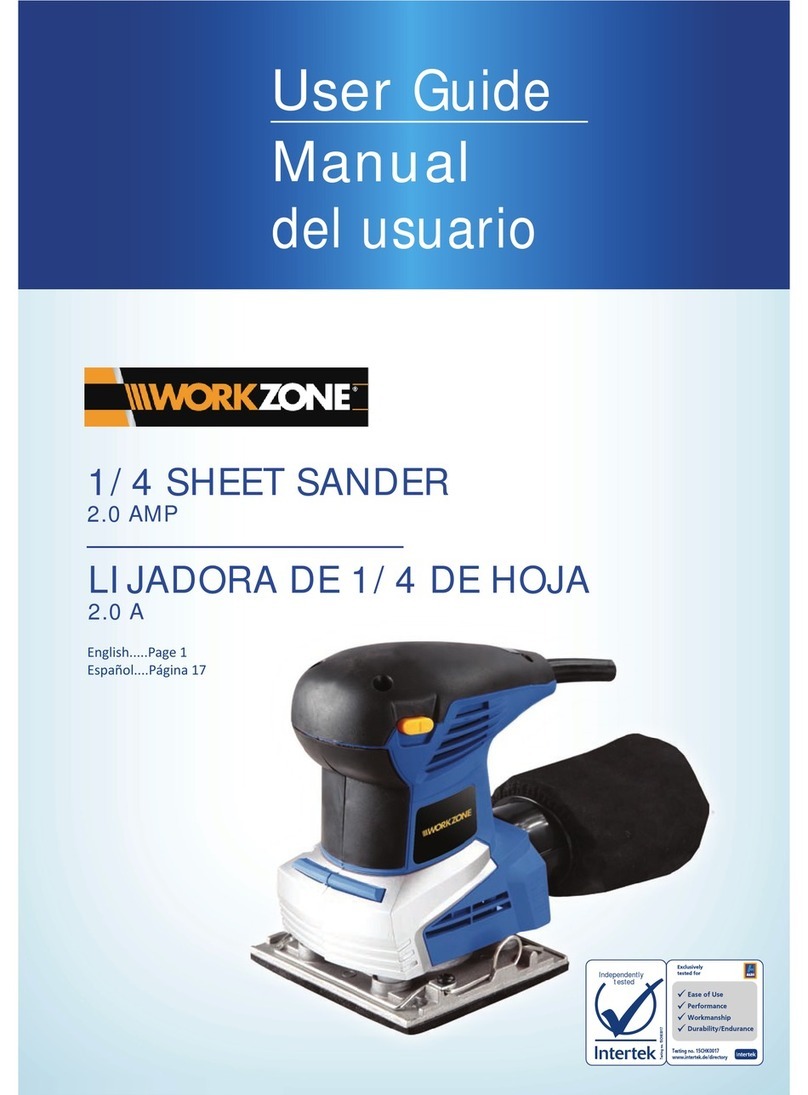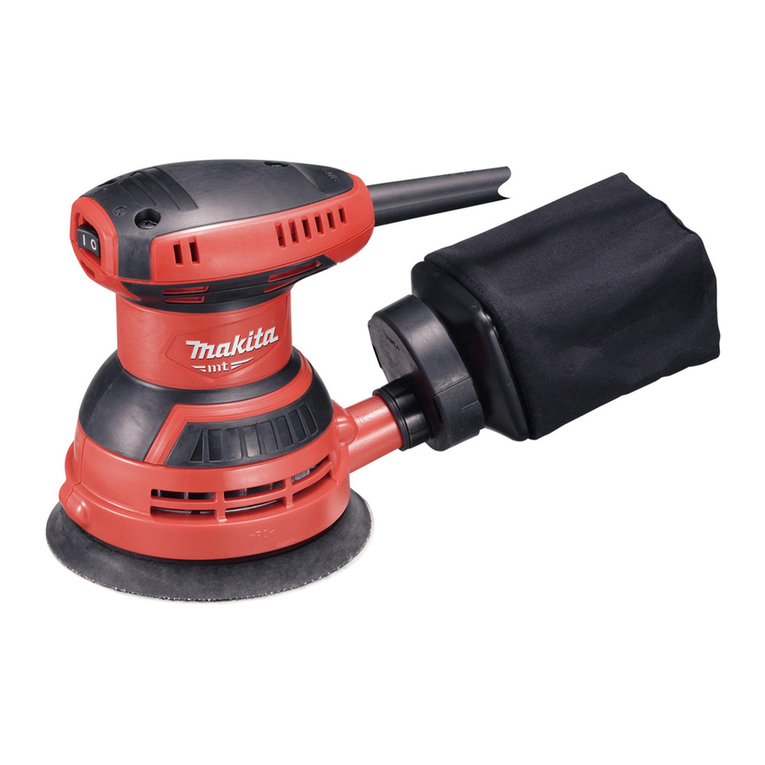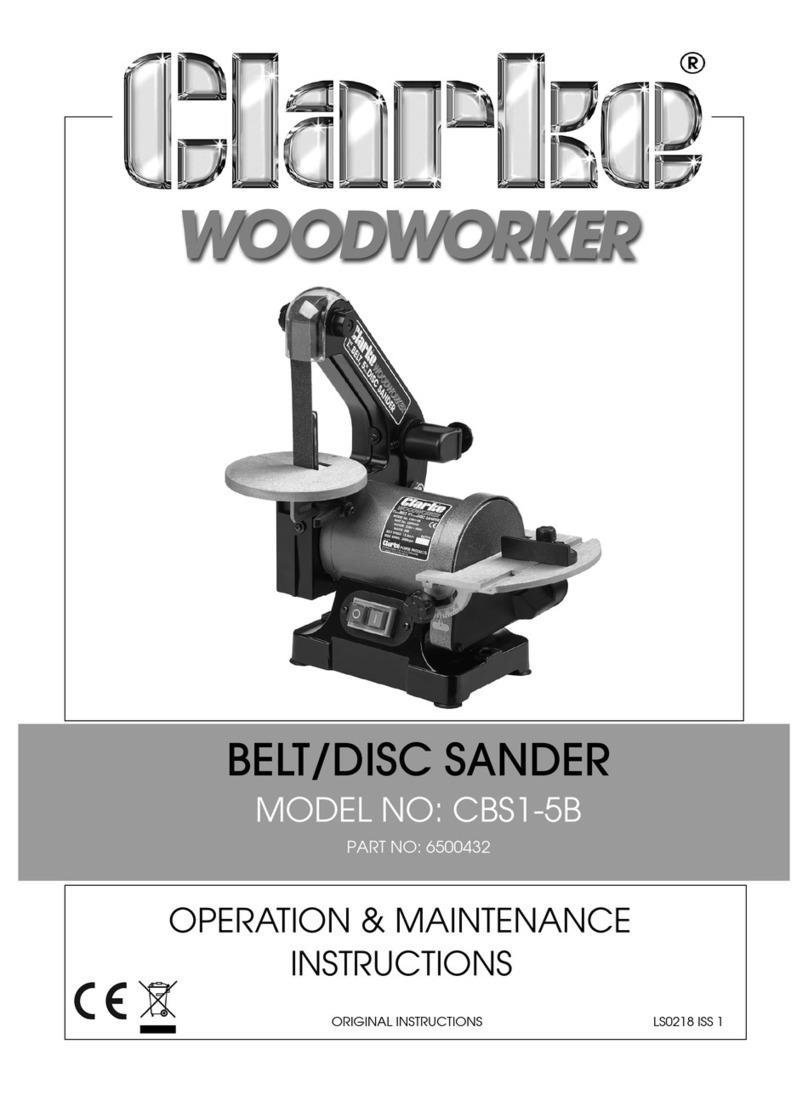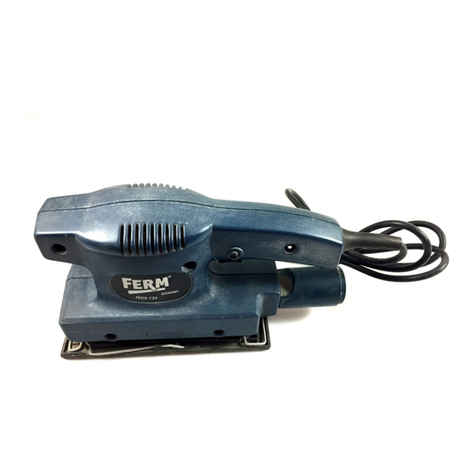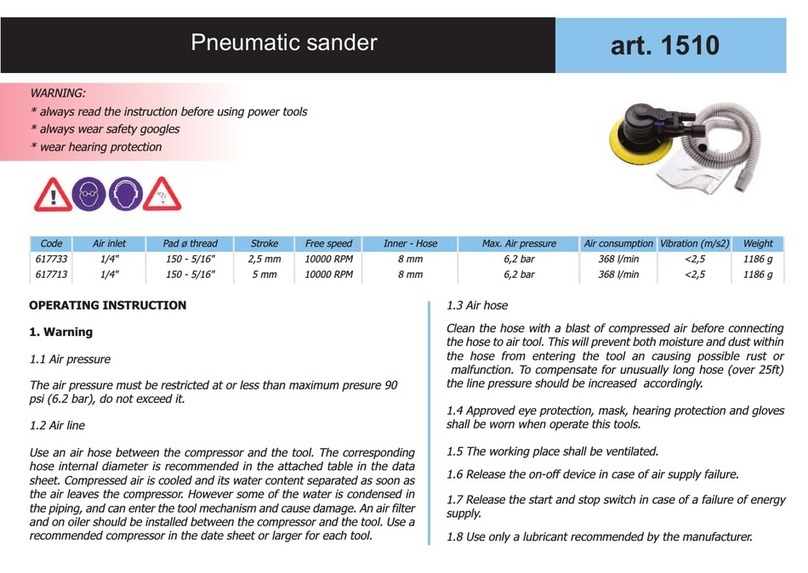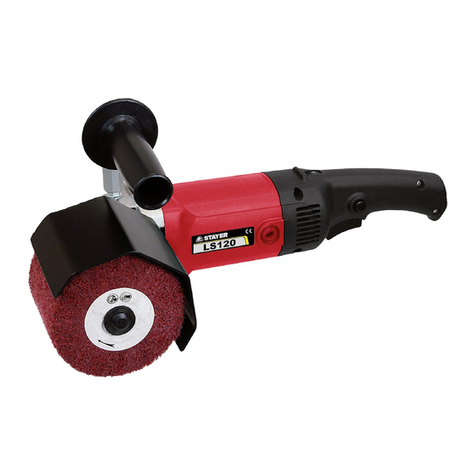
DIY 1200W Sander Polisher 180mm
5
silverlinetools.com
f) If operating a power tool in a damp location is unavoidable, use a residual current device
(RCD) protected supply.Use of an RCD reduces the risk of electric shock.
3) Personal safety
a) Stay alert, watch what you are doing and use common sense when operating a power
tool. Do not use a power tool while you are tired or under the inuence of drugs, alcohol
or medication. A moment of inattention while operating power tools may result in serious
personal injury.
b) Use personal protective equipment. Always wear eye protection. Protective equipment
such as a dust mask, non-skid safety shoes,hard hat or hearing protection used for appropriate
conditions will reduce personal injuries.
c) Prevent unintentional starting. Ensure the switch is in the OFF-position before connecting
to power source and/or battery pack, picking up or carrying the tool.Carrying power tools
with your nger on the switch or energising power tools that have the switch ON invites accidents.
d) Remove any adjusting key or wrench before turning the power tool ON. A wrench or a key
left attached to a rotating part of the power tool may result in personal injury.
e) Do not overreach. Keep proper footing and balance at all times. This enables better control
of the power tool in unexpected situations.
f) Dress properly. Do not wear loose clothing or jewellery.Keep your hair and clothing away
from moving parts. Loose clothes, jewellery or long hair can be caught in moving parts.
g) If devices are provided for the connection of dust extraction and collection facilities,
ensure these are connected and properly used. Use of dust collection can reduce dust-related
hazards.
h) Do not let familiarity gained from frequent use of tools allow you to become complacent
and ignore tool safety principles. A careless action can cause severe injury within a fraction of a
second.
4) Power tool use and care
a) Do not force the power tool. Use the correct power tool for your application. The correct
power tool will do the job better and safer at the rate for which it was designed.
b) Do not use the power tool if the switch does not turn it ON and OFF. Any power tool that
cannot be controlled with the switch is dangerous and must be repaired.
c) Disconnect the plug from the power source and/or remove the battery pack, if detachable,
from the power tool before making any adjustments, changing accessories,or storing
power tools. Such preventive safety measures reduce the risk of starting the power tool
accidentally.
d) Store idle power tools out of the reach of children and do not allow persons unfamiliar
with the power tool or these instructions to operate the power tool. Power tools are
dangerous in the hands of untrained users.
e) Maintain power tools and accessories. Check for misalignment or binding of moving
parts, breakage of parts and any other condition that may affect the power tool’s
operation. If damaged, have the power tool repaired before use. Many accidents are caused
by poorly maintained power tools.
f) Keep cutting tools sharp and clean.Properly maintained cutting tools with sharp cutting edges
are less likely to bind and are easier to control.
g) Use the power tool, accessories and tool bits, etc.in accordance with these instructions,
taking into account the working conditions and the work to be performed. Use of the power
tool for operations different from those intended could result in a hazardous situation.
h) Keep handles and grasping surfaces dry, clean and free from oil and grease.Slippery
handles and grasping surfaces do not allow for safe handling and control of the tool in
unexpected situations.
5) Service
a) Have your power tool serviced by a qualied repair person using only identical
replacement parts. This will ensure that the safety of the power tool is maintained.
Sanding Tool Safety
WARNING:Holdthepowertoolbyinsulatedhandlesorgrippingsurfacesonly,becausethe
sandingbelt/sheetmaycontactitsowncord.Cuttinga"live"wiremaymakeexposedmetalpartsof
thepowertool‘live’andcouldgivetheoperatoranelectricshock.
WARNING:Useclampsoranotherpracticalwaytosecuretheworkpiecetoastableplatform.
Holdingtheworkpiecebyhandoragainstthebodymakesitunstableandmayleadtolossof
control.
a. ALWAYS wear appropriate protective equipment, including a dust mask with a minimum
FFP2 rating, eye protection and ear defenders
b. Ensure all people in the vicinity of the work area are also equipped with suitable personal
protective equipment
c. Take special care when sanding some woods (such as beech,oak, mahogany and teak), as
the dust produced is toxic and can cause extreme reactions
d. NEVER use to process any materials containing asbestos. Consultaqualiedprofessional,if
youareuncertainwhetheranobjectcontainsasbestos
e. DO NOT sand magnesium or alloys containing a high percentage of magnesium
f. Be aware of paint nishes or treatments that may have been applied to the material that
is being sanded. Manytreatmentscancreatedustthatistoxic,orotherwiseharmful.Ifworking
on a building constructed prior to 1960, there is an increased chance of encountering lead-based
paints
g. The dust produced when sanding lead-based paints is particularly hazardous to children,
pregnant women, and people with high blood pressure. DONOTallowthesepeoplenearto
theworkarea,evenifwearingappropriatepersonalprotectiveequipment
h. Whenever possible, use a vacuum dust extraction system to control dust and waste
i. Be especially careful when using a machine for both wood and metal sanding. Sparksfrom
metalcaneasilyignitewooddust.ALWAYScleanyourmachinethoroughlytoreducetheriskof
re
j. Empty the dust bag or container frequently during use, before taking breaks and after
completion of sanding. Dustmaybeanexplosionhazard.DONOTthrowsandingdustinto
anopenre.Spontaneouscombustionmayoccurwhenoilorwaterparticlescomeintocontact
withdustparticles.Disposeofwastematerialscarefullyandinaccordancewithlocallawsand
regulations.
k. Work surfaces and sandpaper can become very hot during use. If there is evidence of
burning(smokeorash),fromtheworksurface,stopandallowthematerialtocool.DONOTtouch
worksurfaceorsandpaperuntiltheyhavehadtimetocool
l. DO NOT touch the moving sandpaper
m. ALWAYS switch off before you put the sander down
n. DO NOT use for wet sanding. Liquids entering the motor housing can cause severe electric
shocks
o. ALWAYS unplug the sander from the mains power supply before changing or replacing
sandpaper
p. Even when this tool is used as prescribed it is not possible to eliminate all residual risk
factors. If you are in any doubt as to safe use of this tool, do not use it
Polisher Safety
• Do not use this polisher as an angle grinder
• Alwaysreadandunderstandallinformationsuppliedwithpolishingpastesbeforeuse
• Donotsmoke,eatordrinkwhenusingthispolisher
• Neverattachanyaccessorywithamaximumspeedlowerthanthenoloadspeedofthetool
1Spindle
2Spindle Lock Button
3Front Handle
4Speed Control Dial
5Lock-On Button
6Rear Handle
7ON/OFF Trigger Switch
8Hook & Loop Backing Pad
9Hook & Loop Polishing Bonnet
10 Hook & Loop Sanding Disc
11 Brush Access Plugs
Product Familiarisation
Included Accessories:
1 x Hex Key
Intended Use
• Multi-purposerotarypolishingtool,usedforlighttomediumdutypolishingandsandingtasks,
usingsuitablepolishingbonnets,compoundsandhookandloopsandingdiscs
Unpacking your Tool
• Carefullyunpackandinspectyourtool.Fullyfamiliariseyourselfwithallitsfeaturesand
functions
• Ensure that all parts of the tool are present and in good condition. If any parts are missing or
damaged, have such parts replaced before attempting to use this tool
264569/933971_Manual.indd 5 15/07/2019 16:34
